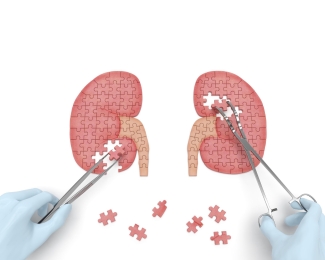World Brain Death Project: Implications for Canadian practice
Thursday, November 05, 2020 Ross FitzGerald
There are inconsistencies in criteria and practice of brain death (death by neurologic criteria) both internationally and within countries. The World Brain Death Project was created to formulate recommendations about the determination of brain death based on extensive reviews of the literature and expert opinion of a large multi-disciplinary, international panel, including representation from intensive care (adult and pediatric), critical care nursing, neurocritical care, neurology and neurosurgery. The recommendations were recently published in the Journal of the American Medical Association (JAMA).
“Brain death is accepted medical practice in most countries, though there may be variations in practice and understanding,” says Dr. Sam Shemie, medical advisor with Canadian Blood Services. Dr. Shemie discussed the world brain death project at length ahead of the Critical Care Forum 2018 (read full coverage here).
“[The World Brain Death Project] aims to develop an international minimum standard of practice to enhance the current medical and legal standing for the brain-based determination of death or as it is also called, death by neurological criteria. The goal is the harmonization of international practices to address the inconsistencies among practice in countries and between countries and identify gaps in knowledge that can be addressed by research.”
These recommendations have received widespread international society endorsement. While this document has been designed to be as pragmatic as possible and applicable to all types of hospitals, it is recognized that countries and professional societies will need to review and adapt the recommendations based on their own legal, health care resource, and technological situations.
At present, this global work does not change current brain death determination practices in Canada. However, these recommendations will be used in the clinical practice guideline development process that seeks to update the Canadian determination of death by neurologic criteria as part of the Organ Donation and Transplantation Collaborative funded by Health Canada. The project, Developing A Brain-Based Definition of Death and Criteria for its Determination After Arrest of Circulation or Neurologic Function in Canada, is being led by Canadian Critical Care Society in partnership with Canadian Blood Services and the Canadian Medical Association.
The goal is to establish a brain-based definition of death as well as evidence-based and expert-informed criteria for death determination after arrest of neurologic or circulatory function. Once completed, the updated guideline will then be available for nationwide implementation.
To learn more about the implications of the World Brain Death Project for Canadian death determination practices, visit Canadian Blood Services’ professional education website.
Canadian Blood Services – Driving world-class innovation
Through discovery, development and applied research, Canadian Blood Services drives world-class innovation in blood transfusion, cellular therapy and transplantation—bringing clarity and insight to an increasingly complex healthcare future. Our dedicated research team and extended network of partners engage in exploratory and applied research to create new knowledge, inform and enhance best practices, contribute to the development of new services and technologies, and build capacity through training and collaboration. Find out more about our research impact.
The opinions reflected in this post are those of the author and do not necessarily reflect the opinions of Canadian Blood Services nor do they reflect the views of Health Canada or any other funding agency.
Related blog posts
The third module of Canadian Clinical Guide to Organ Donation just launched.
This year marks the fifth annual Deceased Organ Donation Symposium at the Critical Care Canada Forum in Toronto. This two-day symposium held Nov. 11–12, 2019 promotes scientific research in organ donation and transplantation and its application to critical care practice.
Five hundred kidney transplants made possible through national highly sensitized patient program


